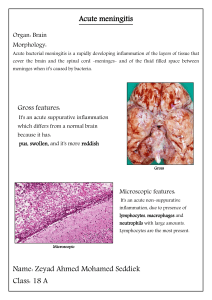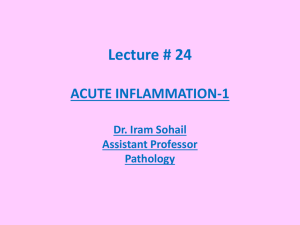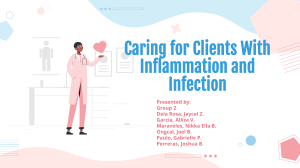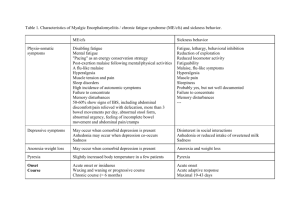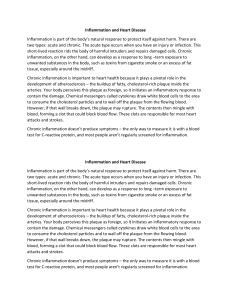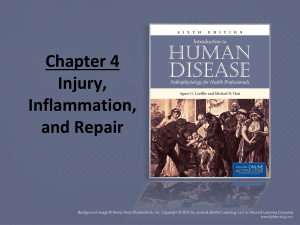Acute and Chronic Inflammation
advertisement
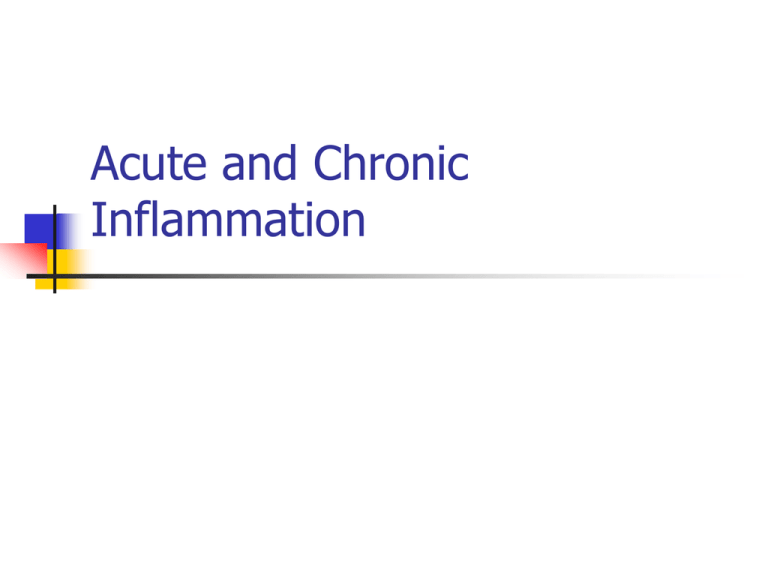
Acute and Chronic Inflammation Introduction Injurious stimuli cause a protective vascular connective tissue reaction called “inflammation” Dilute Destroy Isolate Initiate repair Acute and chronic forms Acute inflammation Immediate and early response to tissue injury (physical, chemical, microbiologic, etc.) Vasodilation Vascular leakage and edema Leukocyte emigration (mostly PMNs) Leukocyte granules Other antimicrobials in leukocyte granules: Bactericidal permeability increasing protein (BPI) Lysozyme Lactoferrin Defensins (punch holes in membranes) Chemical mediators Plasma-derived: Complement, kinins, coagulation factors Many in “pro-form” requiring activation (enzymatic cleavage) Cell-derived: Preformed, sequestered and released (mast cell histamine) Synthesized as needed (prostaglandin) Possible outcomes of acute inflammation Complete resolution Little tissue damage Capable of regeneration Scarring (fibrosis) In tissues unable to regenerate Excessive fibrin deposition organized into fibrous tissue Outcomes (cont’d) Abscess formation occurs with some bacterial or fungal infections Progression to chronic inflammation (next) Chronic inflammation Lymphocyte, macrophage, plasma cell (mononuclear cell) infiltration Tissue destruction by inflammatory cells Attempts at repair with fibrosis and angiogenesis (new vessel formation) When acute phase cannot be resolved Persistent injury or infection (ulcer, TB) Prolonged toxic agent exposure (silica) Autoimmune disease states (RA, SLE) Patterns of acute and chronic inflammation Serous Fibrinous Watery, protein-poor effusion (e.g., blister) Fibrin accumulation Either entirely removed or becomes fibrotic Suppurative Presence of pus (pyogenic staph spp.) Often walled-off if persistent Patterns (cont’d) Ulceration Necrotic and eroded epithelial surface Underlying acute and chronic inflammation Trauma, toxins, vascular insufficiency Systemic effects Fever One of the easily recognized cytokinemediated (esp. IL-1, IL-6, TNF) acutephase reactions including Anorexia Skeletal muscle protein degradation Hypotension Leukocytosis Elevated white blood cell count Systemic effects (cont’d) Bacterial infection (neutrophilia) Parasitic infection (eosinophilia) Viral infection (lymphocytosis)
